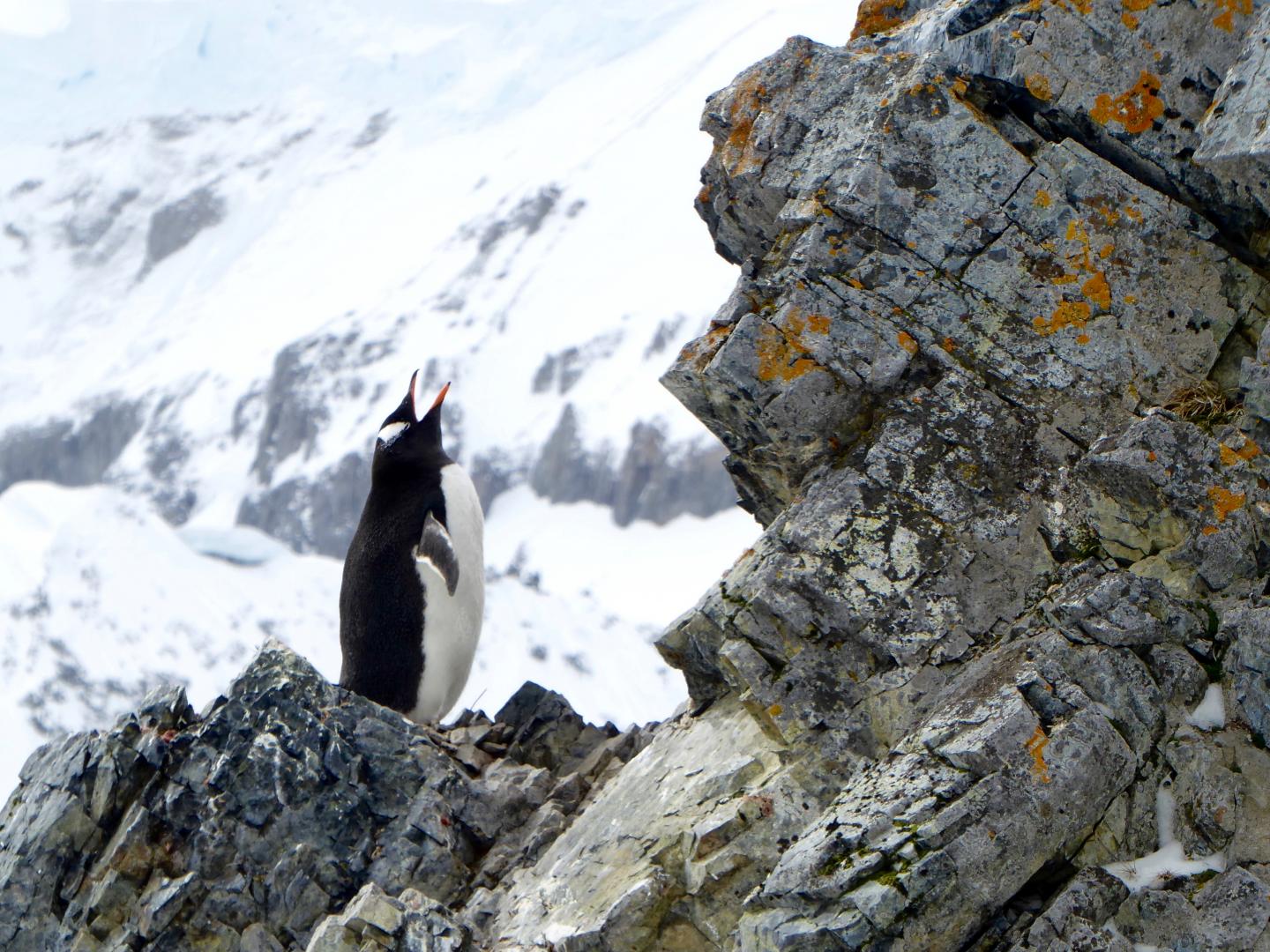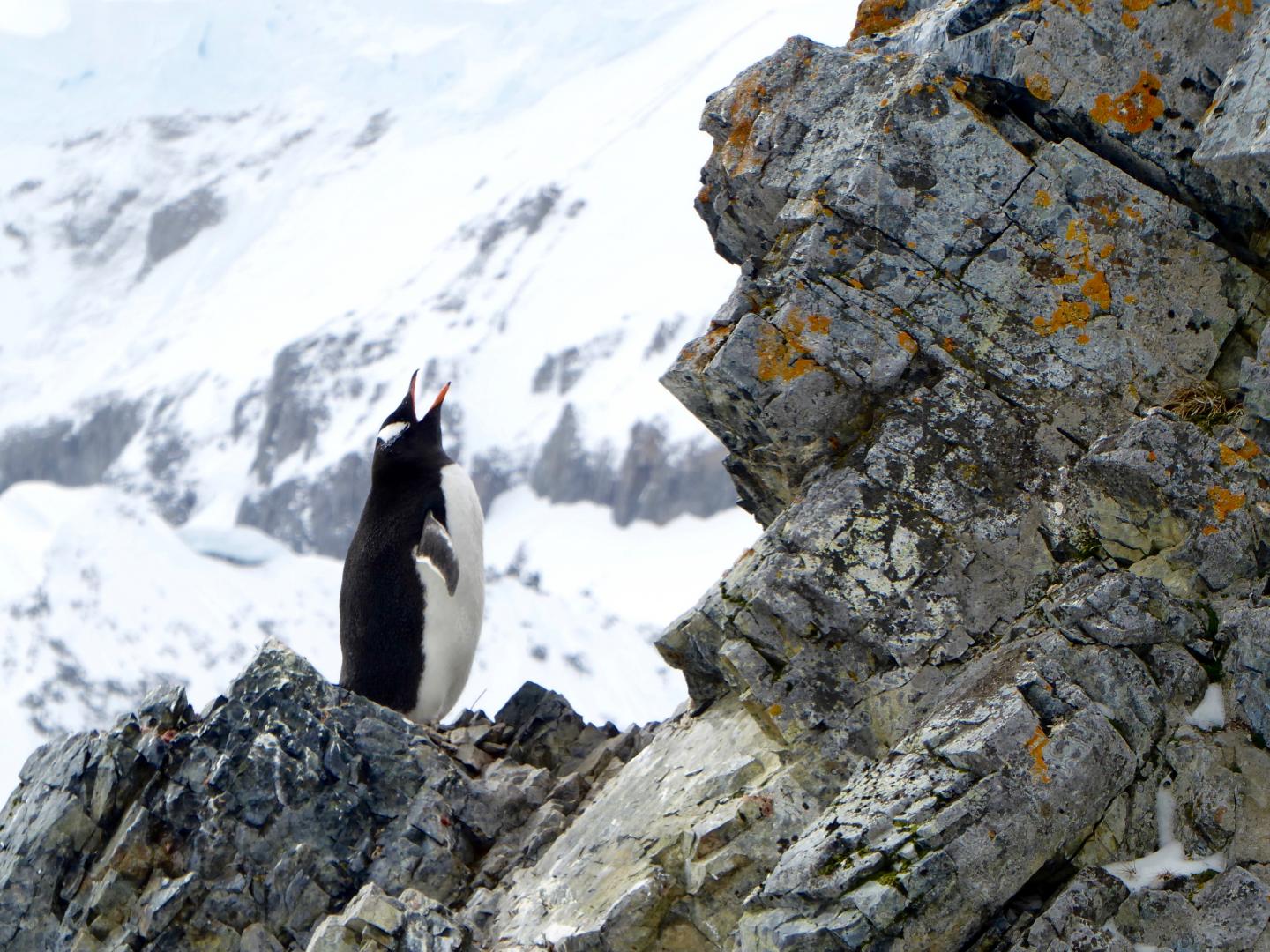
Credit: M. Lynch
Vocal communication is central to the lives of many birds, which use sound to attract mates and defend territories. Penguins are no exception, but we know little about how or why penguin vocalizations vary geographically between isolated populations. A new study from The Auk: Ornithological Advances takes a broad look at vocalizations across the range of Gentoo Penguins and concludes that while their calls do vary from place to place, we still have a lot to learn about the processes at work.
The Gentoo Penguin's "ecstatic" call, consisting of repeated pairs of short syllables, is used to attract and contact mates. Maureen Lynch and her PhD advisor Dr. Heather Lynch (no relation) of Stony Brook University recorded ecstatic calls at 22 Gentoo Penguin colonies across the Antarctic Peninsula, southern Argentina, and nearby islands. While they found variation in call frequency and duration both within and between colonies, no clear patterns emerged based on latitude, region, or subspecies. An algorithm based on their data was able to classify calls to correct colonies better than random, but with a high error rate.
Their results suggest that the vocal characteristics of colonies drift independently of each other over time. Within colonies, it may be beneficial for individuals to differ in their calls so that they can tell each other apart. "There is so much that we still do not know about penguin vocal behavior," says Heather. "We see this as being very much the beginning, rather than the end, of understanding how penguins communicate, how and if such communications play a functional role in protection against predators, choice of mates, and breeding site selection."
"Work in the Antarctic is always challenging, and this project was time- and data-intensive, with data collection over three field seasons," adds Maureen. "Unexpected challenges came from flying birds rather than penguins. The recording units hold up well in the Antarctic elements and can even record over winter, but I learned the hard way that if I leave a Song Meter unattended in the Falkland Islands, the Striated Caracaras will eat the windscreens off the microphones and can actually pull the microphones off."
"Understanding the drivers of population differentiation is increasingly important for species such as penguins that are being impacted by climate change," according to Fordham University's J. Alan Clark, a penguin behavior researcher who was not involved in the study. "This study, the largest of its kind, takes a creative and rigorous approach to exploring the role of vocalizations in population differentiation across a wide geographic range and across populations with known intraspecific genetic variation. The results of this study provide practical insights that help set the stage for future research on interactions between speciation processes and climate change."
###
"Variation in the ecstatic display call of the Gentoo Penguin (Pygoscelis papua) across regional geographic scales" will be available September 27, 2017, at http://www.bioone.org/doi/full/10.1642/AUK-17-4.1 (issue URL http://www.bioone.org/toc/tauk/134/4).
About the journal: The Auk: Ornithological Advances is a peer-reviewed, international journal of ornithology that began in 1884 as the official publication of the American Ornithologists' Union, which merged with the Cooper Ornithological Society in 2016 to become the American Ornithological Society. In 2009, The Auk was honored as one of the 100 most influential journals of biology and medicine over the past 100 years.
Media Contact
Rebecca Heisman
[email protected]
http://americanornithologypubs.org/
Related Journal Article
http://dx.doi.org/10.1642/AUK-17-4.1





